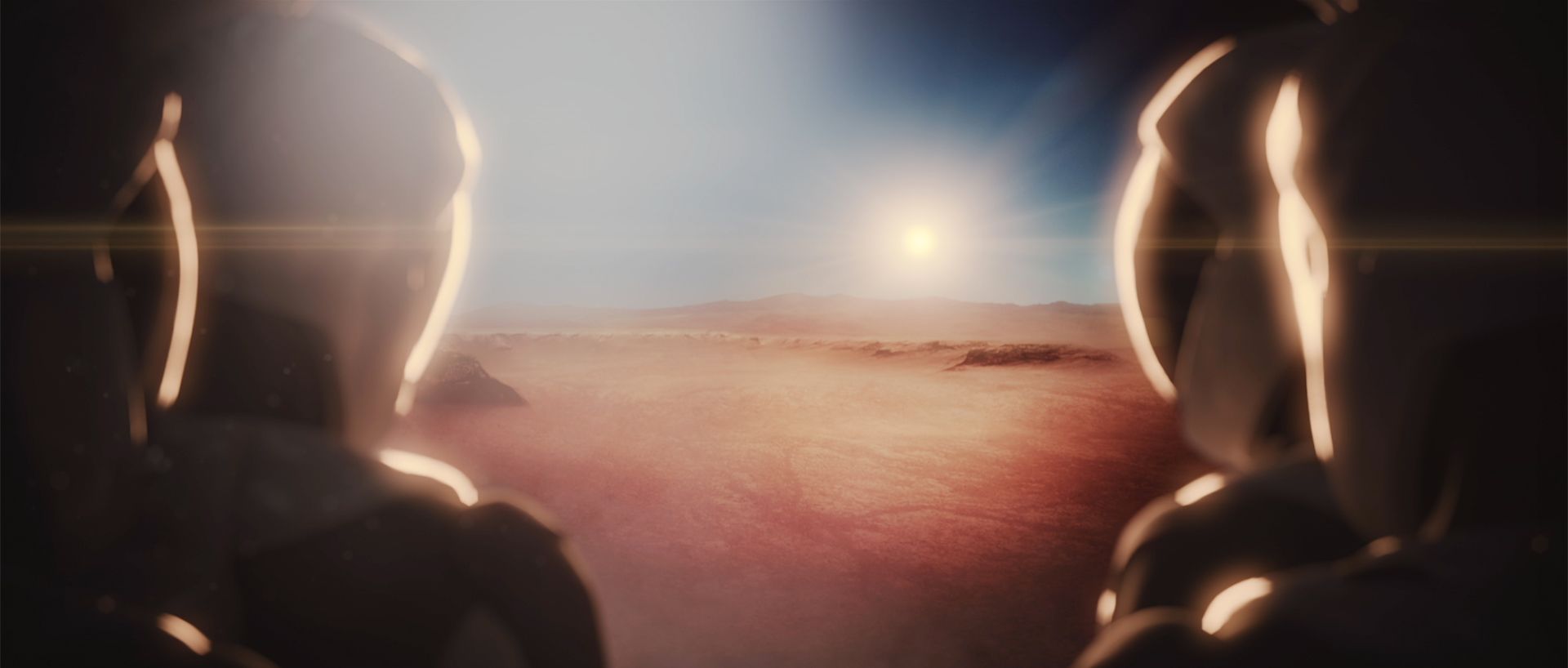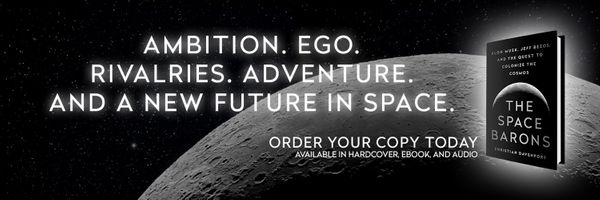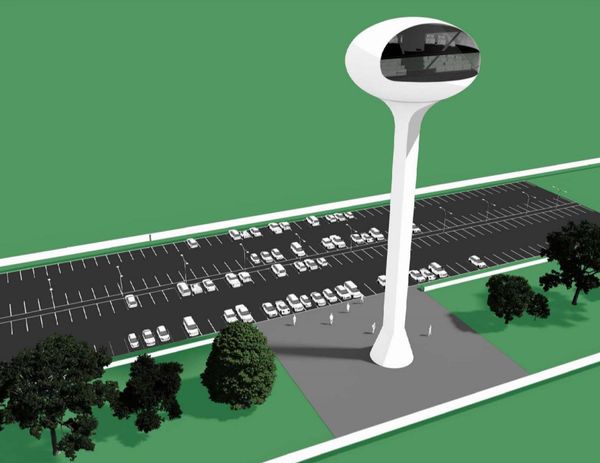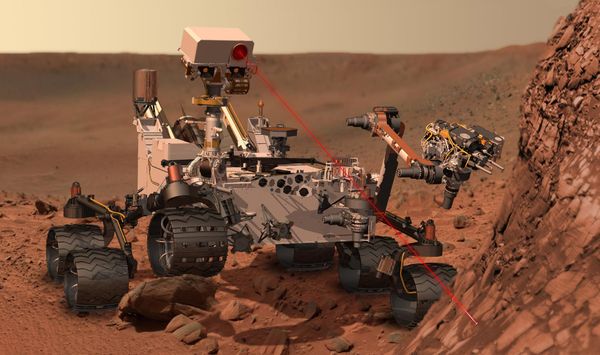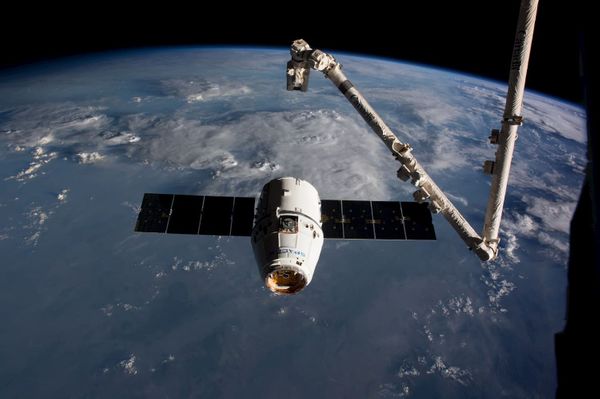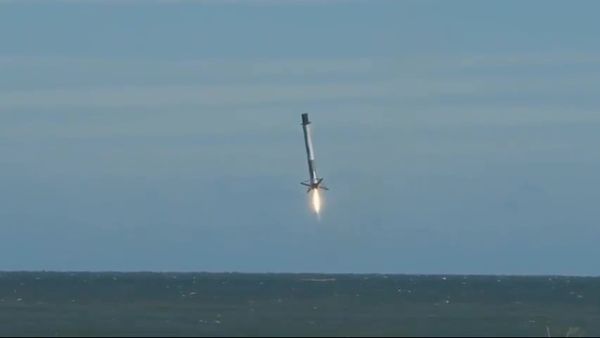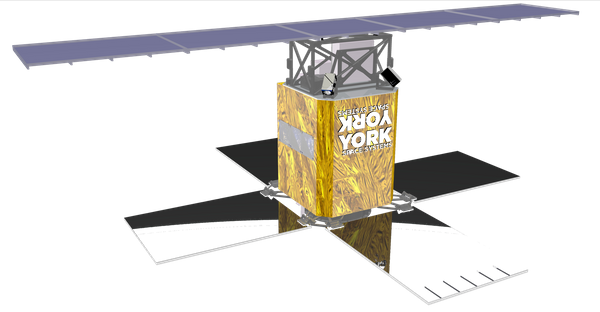Subscribe on iTunes, Google Play, or by RSS for post-IAC analysis and more space exploration discussions. (Banner image courtesy of SpaceX on Flickr.)
Space researchers, rocket scientists, aerospace engineers, and (of course) Elon Musk travel to Adelaide, Australia for the 68th annual International Astronautical Congress this week.
The congress, commonly known as the IAC, is an event with a rich history of collaboration and celebration of research in the field of space exploration. The IAC is held by the International Astronautical Federation, which celebrated its 68th birthday September 4th, was created in the midst of the space race to re-establish scientific dialogue after the descent of the Iron Curtain.[1] To this day, the IAC remains to be a place for students, academics, and industry leaders alike to share new advancements in space exploration.
A year ago

Interplanetary Transport System concept, courtesy of SpaceX on Flickr.
If you're like me, you probably had never paid much attention to the IAC before Elon Musk's keynote, "Making Humanity a Multiplanetary Species," last fall at the Congress in Guadalajara, Mexico. In his talk, Musk officially unveiled SpaceX's approach to Mars colonization. The high-level, privately-funded, "Mars Colonial Transporter" found a new name as the "Interplanetary Transport System (ITS)" -- a vehicle composed of a massive 12-meter reusable lifter stage equipped with 42 Raptor methalox engines, and an enormous upper stage "spaceship" which would engage in in-space refueling and carry cargo and passengers to Mars. Musk boasted new technologies built into this system like a composite structure, and the theoretical performance to land on Jupiter's moon, Europa.
Since Elon's presentation, photos and videos have surfaced demonstrating early tests of ITS technology. For example, a huge (12-meter) composite fuel tank was shown off on SpaceX's social media. The tank was seen aboard a barge leaving out to sea, presumably for a pressure test.[2] It never returned, apart from a few shards that washed up on the beach.
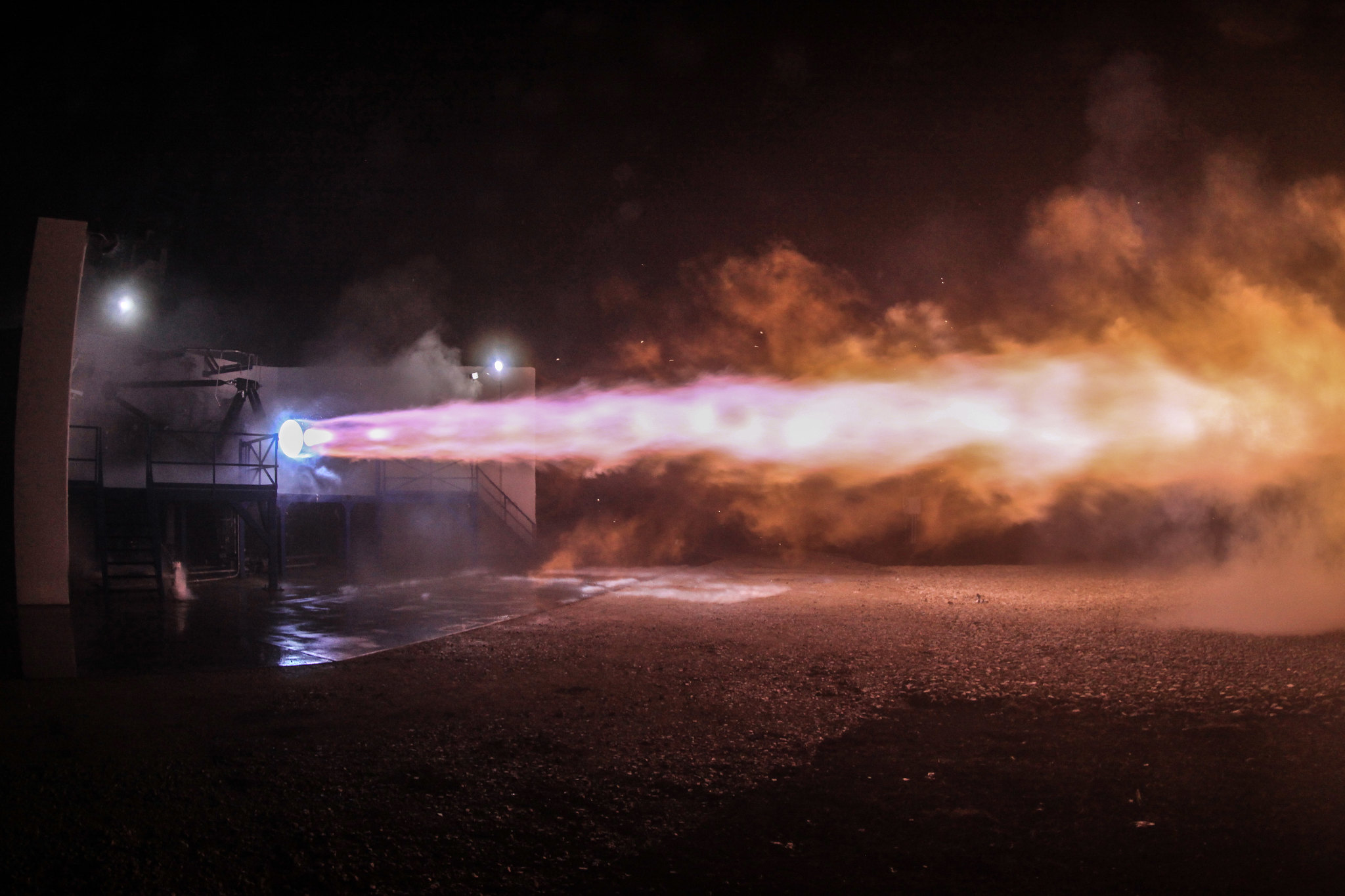
Sub-scale Raptor engine testing (2016), courtesy of SpaceX on Flickr.
SpaceX also demonstrated some performance tests of a sub-scale test article of their Raptor engine, the full-flow methalox successor to the Merlin series, with promising results.[3] Raptor's flight performance has not yet been demonstrated.
According to this year's IAC program schedule,[4] Musk will deliver an update to last year's talk on Friday, September 29. So what is there to talk about?
Hinting at the Moon
Elon's vision for SpaceX and humanity has always been large scale colonization of Mars -- a goal deeply rooted in the company's culture as much as its technological development. But after Elon's rally for Mars-focused space exploration at IAC 2016, we've seen little enthusiasm in the idea from others in the industry. While Mars colonization will remain on the SpaceX road map for the foreseeable future, there have been hints at shifting the near-term focus to Earth's closest neighbor: the Moon.
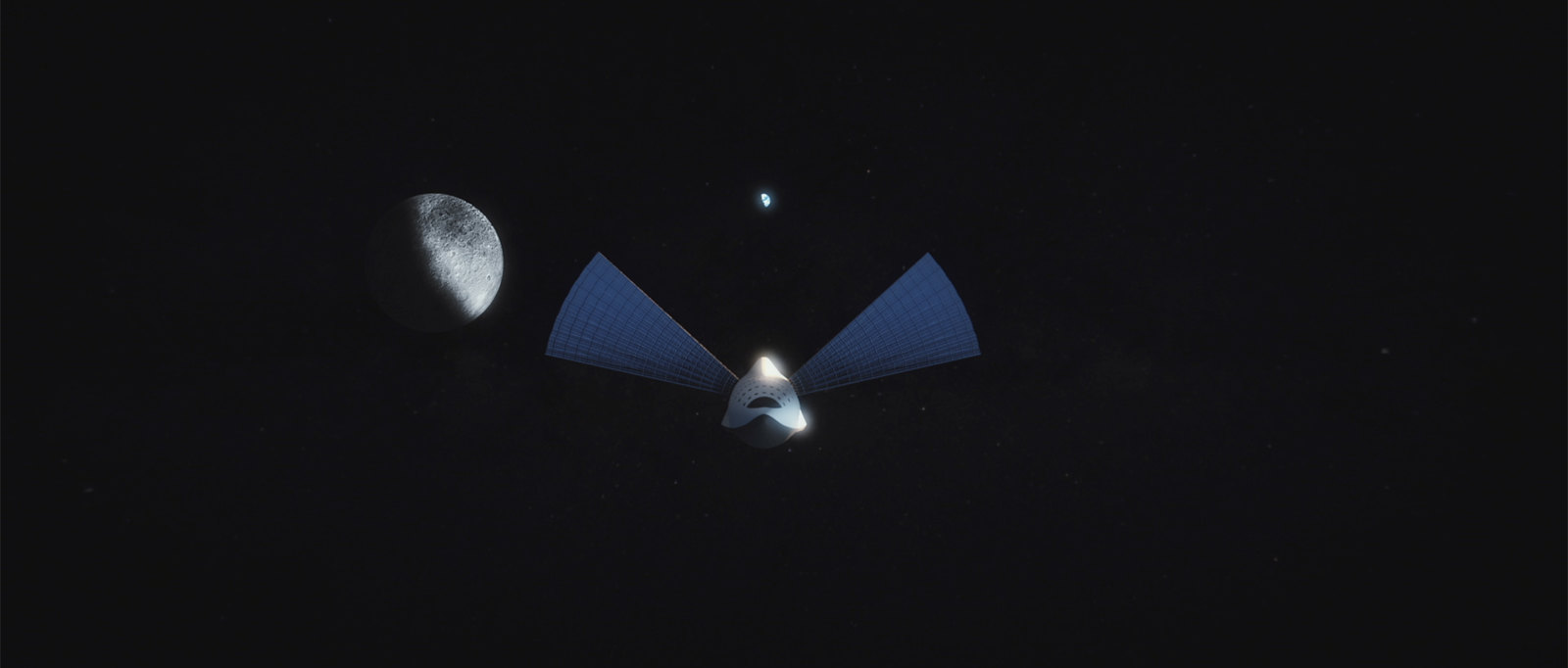
Interplanetary Transport System lunar flyby concept, courtesy of SpaceX on Flickr.
Missions to and around the moon have always been a part of NASA's Journey to Mars, including EM-1 and EM-2 test missions for the Space Launch System, and the Deep Space Gateway. With Bigelow Aerospace laying plans for a moon base[5] and Jeff Bezos proposing the development of modified New Shepard vehicles as soft moon landers,[6] NASA's interest in the moon is clear -- and private companies are ready to compete for that slice of the market.
And what about SpaceX? We think they're in the game for lunar missions, too. Lunar missions are a huge business opportunity, and with other companies funding development in large, heavy-lift vehicles capable of delivering payloads to the Moon, it would be a mistake not to compete for that market share. Also, let's not forget about the Grey Dragon lunar flyby and Elon's own comments on moon bases at this year's ISS R&D conference.
It will be subtle, though, so don't expect another outright moon mission. We think SpaceX will stay the course of developing vehicles for Mars, but will demonstrate the capability of conducting lunar missions if the opportunity arises.
Revised designs
The Interplanetary Transport System has most definitely seen some revisions internally at SpaceX (hopefully including a new name!). Here are some changes to ITS technical specifications we expect to see:
- 27 Raptor engines. The original video showed 42 engines arranged in concentric circles beneath a 12-meter fuel tank. Elon dropped a hint in July, "A 9m diameter vehicle fits in our existing factories ..." Given the specs on ITS that we were given at IAC 2016, a 3-meter reduction in diameter would indicate that the outermost ring of engines would be dropped from the launcher's design.
- Mini ITS Spaceship. To go along with the smaller fuel tank, the spaceship is likely to be downsized as well. For demonstration and exploration missions, it makes more sense to develop the technology on a 6-10 person crew vehicle. Large-crew or extremely large cargo capacity would add superfluous complexity--something especially undesirable in a new spacecraft.
- Conventional solar panels. As cool as they are, the spaceship's fan-like solar panels are unlikely to make it through to production. It's difficult to imagine how such a large solar array would be stored during launch and re-entry. They seem to appear out of nowhere in the videos...
- Fewer windows. We understand the look the ITS spaceship was going for with its many windows and interior reminiscent of a cruise ship, but it's not very practical for the first iteration of a manned interplanetary vehicle.
Not everything will change
Some elements of the ITS architecture are less likely to be revised. Here are a few features that we think will still be around in the updated design:

ITS in-space refueling concept, courtesy of SpaceX on Flickr.
- In-space refueling. This technology is at the heart of the two-stage ITS concept. In fact, in the 2016 proposal, the ITS spaceship itself is sent up with minimal fuel and runs its tank dry to boost itself into orbit in order to be light enough to make it there. In-space refueling is necessary for any large vehicle to make an interplanetary trip, so this tech is most definitely still in the running.
- Boosters landing in the launch mounts. The IAC 2016 video showed the lifter stage returning to the launch site and landing directly in the launch clamps, no landing legs required. Although this looks like a challenge, it is apparently one Elon think is worth pursuing. No landing legs means less wasted mass on launch.
Slow at first, then very fast. Def not hover.
— Elon Musk (@elonmusk) June 9, 2017
- Composite tanks. This one is still up for debate. On paper, it makes sense for a completely reusable vehicle to invest the extra money into carbon composite fuel tanks. In practice, maybe the technology isn't quite there. Our money is on the former.
- No testing with Falcon Heavy. On a high level it makes sense to perform some flight tests of an ITS upper stage by launching it atop a Falcon Heavy. However, when factoring the time, cost, and complexity of integrating an ITS upper stage with Falcon Heavy, it might not be worth it to even bother. SpaceX has learned the hard way with FH that slapping together other vehicles is not as simple as it seems.
How Elon plans to ??? profit
As one can imagine, developing entirely new architecture to support manned missions beyond Earth orbit is not cheap. Last year, Elon estimated ITS to cost $10B in R&D. We think this year Elon will give much more detail into how SpaceX intends to fund ITS development. We'll be watching for more details about:
- Starlink. SpaceX has been keeping details about their proposed constellation of 10,000+ satellites on the down low for quite a while. According to SpaceX President and CEO, Gwynne Shotwell, this is all part of the plan.[7] Last week we discovered the constellation's trademarked name, STARLINK. Two test satellites from their Seattle facility are scheduled to launch early next year. Maybe this is a sign that SpaceX is finally ready to show us what they've been working on.
- Cargo ITS to LEO. Upon its construction, ITS will be among the biggest and most powerful rockets in history. While the focus of SpaceX's PR for ITS has focused on crewed missions, it could also be used for cargo. Cargo spacecraft are easier to build than crewed vehicles, but it's still not trivial. More importantly, ITS will be fully reusable, whereas other launch vehicles like Falcon Heavy and Falcon 9 still require a new second stage booster each time they are launched. Perhaps we'll see flight tests of Cargo ITS serve missions to shake out the design before Crew ITS makes its way to the launch pad, and earn some money along the way. They could also potentially use it to launch a few thousand Starlink satellites. This is all very speculative, but definitely something to look for in Elon's talk.
- Tourism? Some would scoff at the idea. However, Grey Dragon's crew will be solely private citizens. Depending on how Bigelow Aerospace's lunar hotel idea plans out, this could be an option... but it's a stretch.
The bottom line
Just like it says on the schedule, this talk will be an update to what we've already seen. We expect to see details about what's changed in the design and why, plus a whole lot of talk about funding. In broader trends, we may see SpaceX pivot toward the Moon somewhat, but don't expect it to overshadow their plans for Mars.
We won't know what SpaceX or Elon will say for sure until the keynote this Friday in Adelaide. In the meantime, be sure to listen to this week's episode of SPEXcast where TJ, Augie, and I discuss these points and more at length, or help yourself to proceedings of past IACs kept in the IAF archive and a video of last year's IAC keynote.
"History of the IAF." International Astronautical Federation (IAF), 2017, www.iafastro.org/about/history/. Accessed 20 Sept. 2017. ↩︎
docmordrid. SpaceX ITS Spaceship LOX tank test, YouTube, 16 Nov. 2016, www.youtube.com/watch?v=wXKpZCVytJ0. Accessed 21 Sept. 2017. ↩︎
Eric Berger. “Elon Musk reveals first photos of SpaceX’s powerful new Raptor engine.” Ars Technica, 26 Sept. 2016, arstechnica.com/science/2016/09/elon-musk-reveals-first-photos-of-spacexs-powerful-new-raptor-engine/. Accessed 21 Sept. 2017. ↩︎
68th Annual International Astronautical Congress, International Astronautical Federation. Adelaide. 2017. Event schedule. https://iafastro.directory/iac/browse/IAC-17/ ↩︎
“NASA and Bigelow Aerospace Make Plans for Moon Base.” Space Industry News, 16 Jan. 2017, spaceindustrynews.com/nasa-and-bigelow-aerospace-make-plans-for-moon-base/. Accessed 22 Sept. 2017. ↩︎
Davenport, Christian. “An exclusive look at Jeff Bezos’s plan to set up Amazon-like delivery for ‘future human settlement’ of the moon.” The Washington Post, 2 Mar. 2017, www.washingtonpost.com/news/the-switch/wp/2017/03/02/an-exclusive-look-at-jeff-bezos-plan-to-set-up-amazon-like-delivery-for-future-human-settlement-of-the-moon/. Accessed 22 Sept. 2017. ↩︎
Boyle, Alan. “SpaceX’s Gwynne Shotwell signals go-Slow approach for Seattle satellite plan.” GeekWire, 27 Oct. 2015, www.geekwire.com/2015/spacexs-gwynne-shotwell-signals-go-slow-approach-for-seattle-satellite-operation/. Accessed 23 Sept. 2017. ↩︎

